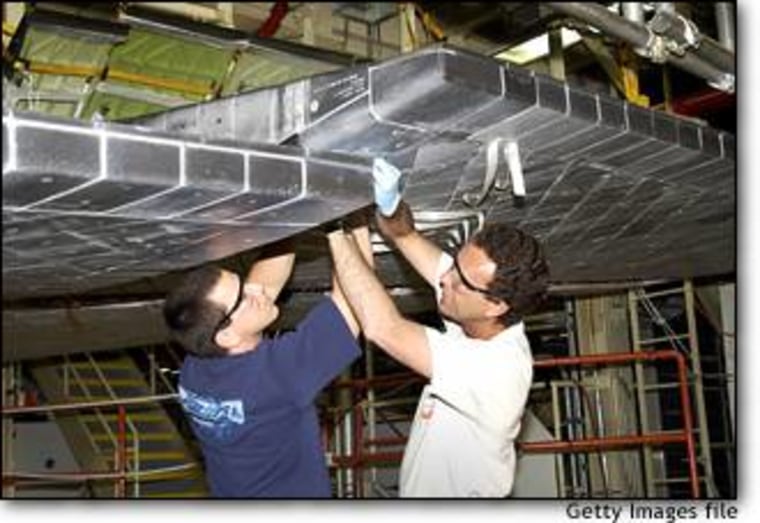While NASA may be known for derring do in space, its ability to influence policy (and funding decisions) has a far more prosaic source: a cadre of lobbying groups, most of them representing the space program’s dozen or so major industry contractors. These lobbyists say the shuttle breakup should help refocus attention on what they portray as a chronically underfunded agency, and they are pledged to ensure that Congress and the Bush administration hear that message.
No one can predict if the increased scrutiny on the shuttle program will mean spending increases or cutbacks for space missions. Some even fear a move to rethink the country’s commitment to manned space flight, a commitment increasingly out of synch with NASA’s international competitors.
“There is a natural tendency for people to struggle with budget priorities and then after an accident come back and say do we really to do need this,” said John Douglass, president of the Aerospace Industries Association, which represents NASA contractors Boeing and Lockheed. “We don’t ever want to see more money spent because of a situation like this, but on the other hand, when you do have a problem like this, you can fix it.”
NASA, almost more than any other government agency, outscources its work to private contractors — leading those companies to spend millions in lobbying efforts on Capital Hill. In 2000, the defense aerospace industry lobby spent more than $27 million supporting the re-election campaigns of key lawmakers, according to the Center for Responsive Politics.
These lobbyists take credit for an increase in congressional support for NASA, which has translated into a reversal of a downtrend in the agency’s funding.
“During the 1990s lobbyists reached out to members [of Congress] in non-traditional districts for NASA like urban and minority districts - not Houston or Florida or Southern California,” said Jeff Lawrence, a former NASA administrator and senior vice president of Cassidy and Associates, a public affairs firm retained by some of NASA’s top contractors. “They spent a lot of time convincing [the representatives] of the benefits of space exploration for the quality of their constituents’ lives.”
Lobbyists like Lawrence worked not only to secure backing for the International Space Station and the modernization of NASA’s shuttle fleet, but also to repair the agency’s aging infrastructure.
Not so high-flyer
Although some industry experts say that financial support is likely to grow in the wake of the Columbia disaster, in the rankings of congressional priorities, NASA comes in close to the bottom of the list.
Surveys of members of Congress have shown over and over that space exploration is “something that everyone loves but no one wants to spend any money on,” said Cassidy.
Prior to any budget increase, the government must quickly decide on the direction of the space program, said Richard Dalbello, executive director of the Satellite Industry Association. The Bush administration must decide how far its commitment to the International Space Station extends.
Despite the many concerns about NASA’s programs and aging infrastructure, experts remain hopeful that Congress will continue to back the agency’s efforts to modernize, expand and send men and women into space.
Space flight by humans “draws a lot of attention, and there is a need to keep the public’s mind engaged” to secure support, said Brett Lambert, an aerospace expert and executive vice president of DFI International. “If you don’t have manned flight then you won’t have NASA.”
Rachel Elbaum is a reporter with MSNBC.com’s Special Reports unit.
